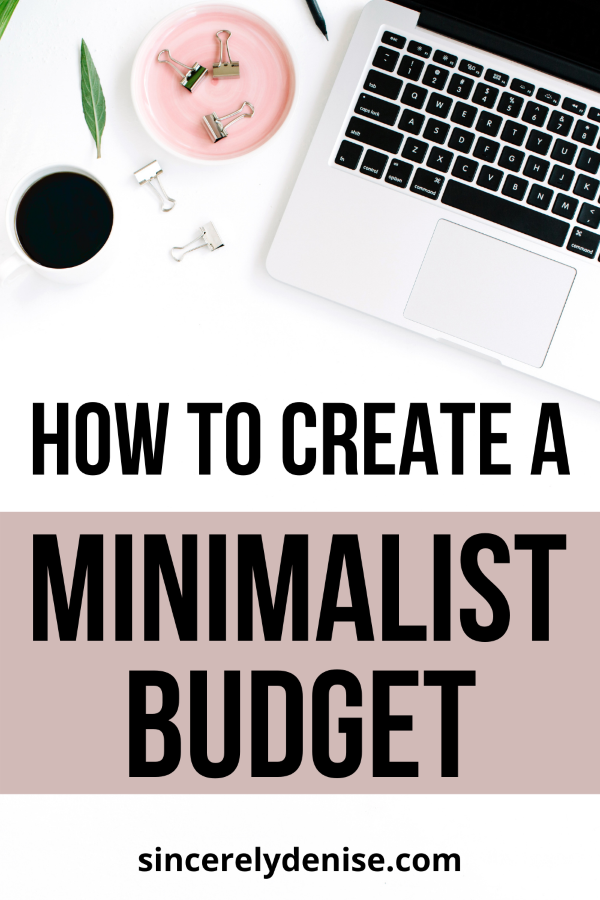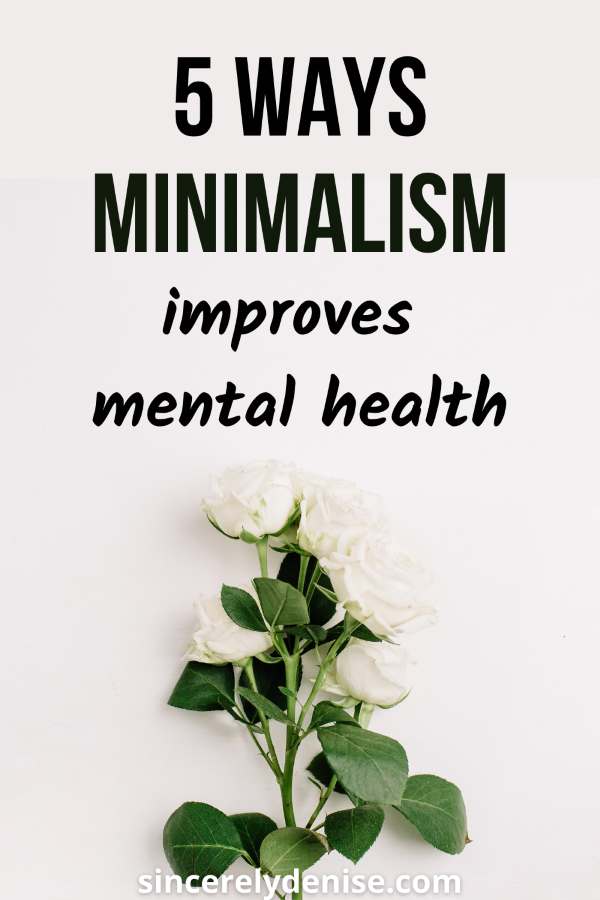Creating a budget can feel overwhelming at first. You read about all these zero based budgets and people telling you that you need to know where every penny is going and every penny that is coming in. While that is helpful, it can also be stressful and time consuming. If you want to create a budget you can stick to and understand, then just keep reading! Here is how to create a minimalist budget to simplify your finances.

I get commissions for purchases made through links in this post. Learn more here.
After I became a minimalist, I looked to simplify every aspect of my life. I’m not saying my life is perfect by any means, but minimalism certainly helps me to stay on top of my finances and everything else in my life from family, work, to home and health.
Related: How Minimalism Saves You Money, Minimalist Money Habits to Practice.
1. Create 4 Categories
When starting a minimalist budget, I have found it best to separate things into 4 different categories. These are the 4 categories that most people would need:
- Expenses
- Savings
- Investments
- Debt
These categories make great umbrella categories if you wish to add subcategories, just try to keep it as simple as possible so things don’t get confusing and complicated.
Expenses
Expenses is everything you spend, from essentials to non-essentials. Basically, how much money is coming out of your account each month? A great subcategory here would be to split essentials and non-essentials, just so you get a feel of what you can cut if you wanted to save more money.
Savings
The second category, savings, could also have subcategories. For example, we bank with Ally for our savings and we have several different categories we save for. These include emergency savings, savings for a down payment on a home, and I am also currently saving for a new car. It’s good to keep it sperate to prevent yourself from digging into savings and losing track of what money is for what. We did this for awhile and had all our savings lumped together which made it messy and difficult to keep track of.
Investments
The third category is investments. Here you can list any money you have invested just so you can keep it separate from your savings and everything else.
Debt
Finally, there is the debt category. This is where you can keep track of any and all debt you have. Just make sure to create sub categories to separate each form of debt, such as student loan debt, credit card debt, and car payment etc. You can also list your mortgage in this category.
2. Get Rid Of Your Debt
So speaking of debt, getting rid of it should be one of your top priorities if you want to simply your finances and create a minimalist budget. Just make sure that you build a healthy emergency savings first (at least 3 months of all basic expenses). If you already have emergency savings, start tackling that debt! Take a hard look at all your expenses and see where you can make cuts to put that money towards your debt. When paying off debt, start with the debt that has the highest interest and work your way down.
Related: How to Save Money on a Low Income
3. Know Your Income
Just like it’s important to know what all of your expenses are, it’s just as important to know what your income is. This could be just your own individual income if you are single or you and your spouses income combined if your married. Basically, your household income. I know this may be easier for some more than others. For example, my husband and I both have multiple streams of income, so it’s important for us to stay organized and on top of our bookkeeping!
4. Stick to One Credit Card
Up until about 3 years ago, I never saw the need to have more than one credit card. Having a credit card is important if you want to build good credit, but I have found that just one can do the job. I know many people who have 2 plus credit cards and it can become too much. It can also become tempting to max out those credit cards if you have a bad relationship with money.
The only reason I now use two credit cards is because one is for business expenses. It makes my life so much easier come tax season! If you own your own business, I highly recommend that you do this as well to simplify your life.
5. Get Cash Back Using Rakuten
If you don’t already use Rakuten, I highly recommend that you sign up! If you have never heard of Rakuten, it’s a site that lets you to earn cash back when you shop through their links. You can shop through the Rakuten website on all the stores you already shop at such as Target, Amazon, Home Depot, Sephora, and so much more! They have also added an “in-store” option so that you can earn cash back online and in-store!
How to Sign Up
Sign up to use Rakuten by clicking here and start using immediately to earn cash back!
Well, those were all my tips on creating a minimalist budget to simplify your finances and life! Happy saving!
Sincerely,
Denise XOXO



